Recent Articles
Popular Makes
Body Types
2017 Honda Civic vs. 2017 Nissan Sentra: Which is Best?
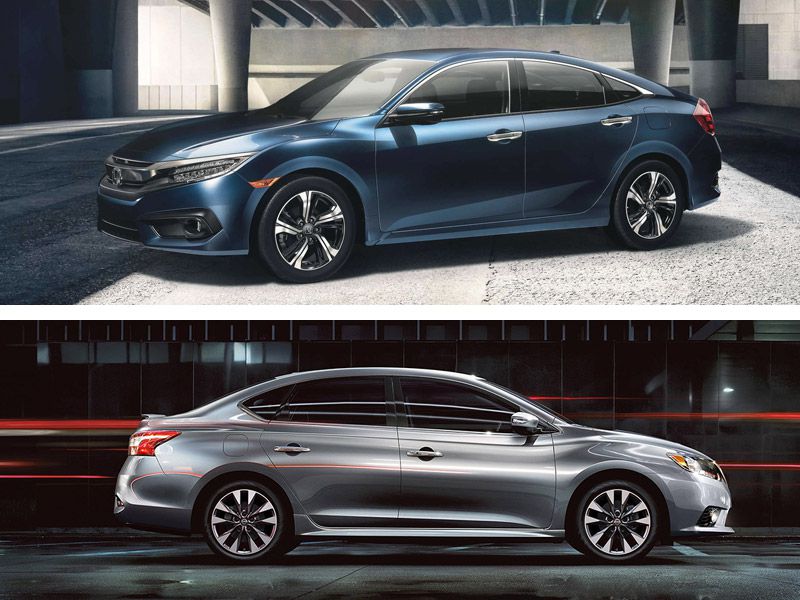
2017 Honda Civic vs 2017 Nissan Sentra exterior profile ・ Photo by Honda and Nissan
The Honda Civic and Nissan Sentra have been fierce competitors over the past 35 years, evolving significantly from their humble roots. The Sentra is currently in its seventh generation and benefits from a cosmetic refresh in the 2016 model year. The 10th generation Civic was launched in the 2016 model year as well, with a well-received and thorough revision, which debuted an entirely new platform. Small imported sedans have retained their popularity, despite the rise of the crossover. The Honda Civic duked it out with the Toyota Corolla for the best-selling small car in America, selling nearly 367,000 units in 2016. The Sentra trailed the leaders, with nearly 215,000 units sold. So how do the 2017 Civic and 2017 Sentra compare? Read on to find out.
Pricing and Trim Levels
The 2017 Nissan Sentra starts at $16,990, with pricing topping out at $24,990. There are nine trim levels: S, SV, SR, SR Midnight Edition, SR Turbo, SR Turbo Midnight Edition, SL, and Nismo. The 2017 Honda Civic sedan prices range from $18,740 through $26,660. It’s offered in five trim levels: LX, EX, EX-T, EX-L, and the top-of-the-line Touring. While the Sentra edges out the Civic when it comes to price and trim level variations, the Civic holds a distinct advantage over the Sentra when it comes to body styles, with 2-door coupe and 5-door hatchback variants. The Sentra is only offered as a 4-door sedan.
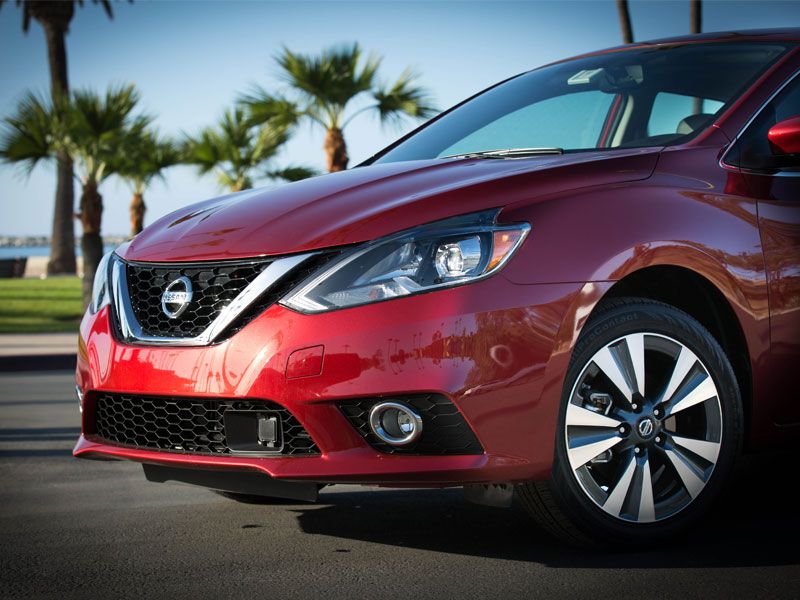
Photo by Nissan
Options
The Civic does not offer a long options list. To gain more features, you’ll typically choose a higher trim level. The one notable exception is the Honda Sensing safety package, which is optional on the EX, EX-T, and EX-L. The Sentra is more customizable, with the SR offering three option packages. The Driver’s Assist option package includes Nissan Connect navigation and app support, blind spot mirrors, and rear cross traffic alert. The SR Premium Technology option package adds a power sunroof, 6-way power driver's seat with power lumbar, leather upholstery, and the Bose audio system.
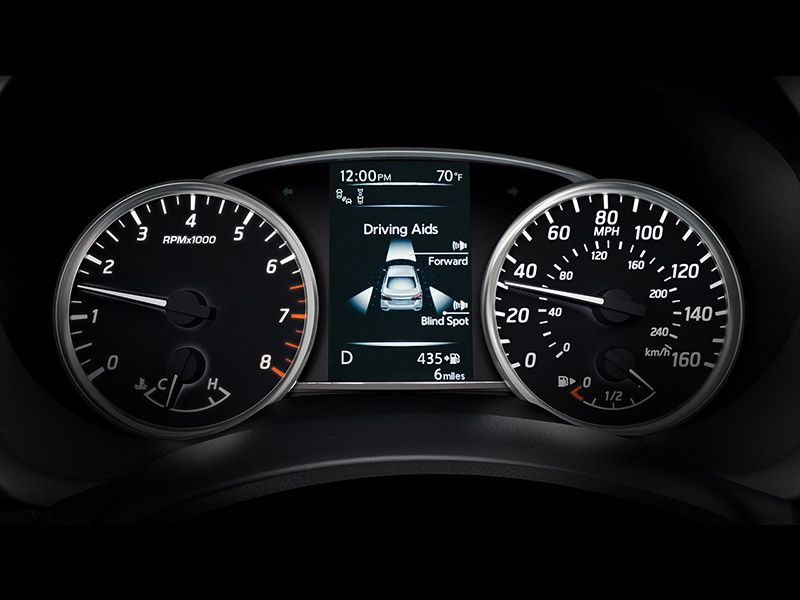
Photo by Nissan
Powertrains and Efficiency
The 2017 Civic LX and EX are equipped with a naturally aspirated 2.0-liter inline 4-cylinder engine that produces 158 horsepower. They’re EPA rated at 31 city/40 highway miles per gallon with the continuously variable transmission (CVT). The LX is also offered with a 6-speed manual transmission, which is rated at 28 city/40 highway. The Civic EX-T, EX-L, and Touring are fitted with a turbocharged 1.5-liter inline-4 that pumps out 174 horsepower. All three models are rated at an impressive 32 city/42 highway mpg with the CVT. The EX-T can be equipped with a 6-speed manual transmission, which is rated a tad lower at 31 city/42 highway. The 2017 Sentra S, SV, SR, and SW are equipped with a 1.8-liter 4-cylinder engine that produces 124 horsepower. The base S is fitted with a 6-speed manual transmission. A CVT transmission is optional in the Sentra S and standard in the SV, SR, and SL. The EPA estimates are 27 city/35 highway for the 6-speed manual and 29 city/37 highway for the CVT. The Sentra SR Turbo models are equipped with a turbocharged 1.6-liter 4-cylinder engine that cranks out 188 horsepower. The EPA estimates for the Sentra Turbo are 27 city/33 highway for the 6-speed manual and 27 city/35 highway for the CVT.
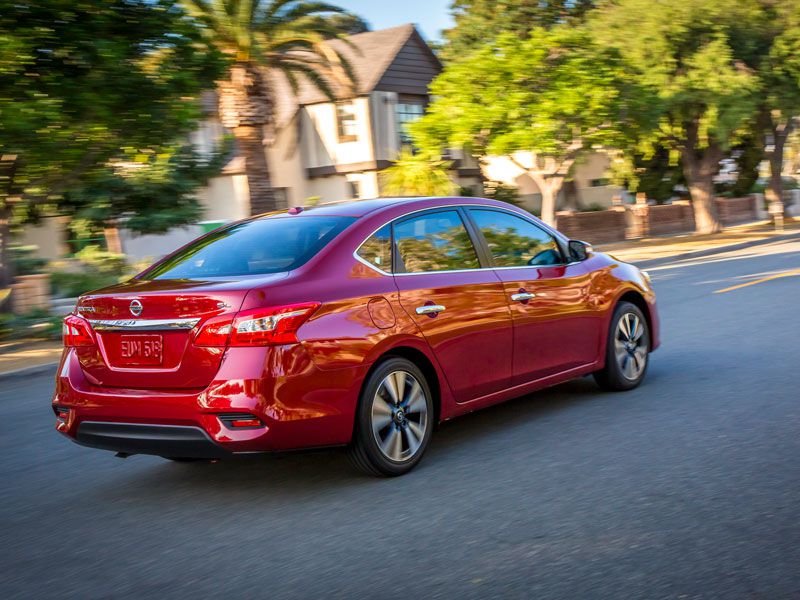
Photo by Nissan
Standout Features
The 2017 Civic’s infotainment system provides quite a step up over the previous generation, with support for Apple CarPlay and Android Auto standard on the higher trim levels. The top-of-the-line Touring model includes the Honda Sensing safety technology suite as a standard feature, along with a 10-speaker 450-watt premium audio system and front and rear heated seats. While the 2017 Sentra’s infotainment system lacks Apple CarPlay and Android Auto capabilities, it supports a range of popular applications, including Siri Eyes Free, Pandora, Google, and iHeartRadio. The top-end 8-speaker Bose premium audio includes a pair of woofers. Heated front bucket seats are optional in the SV and standard in the SR, SL, and Turbo.
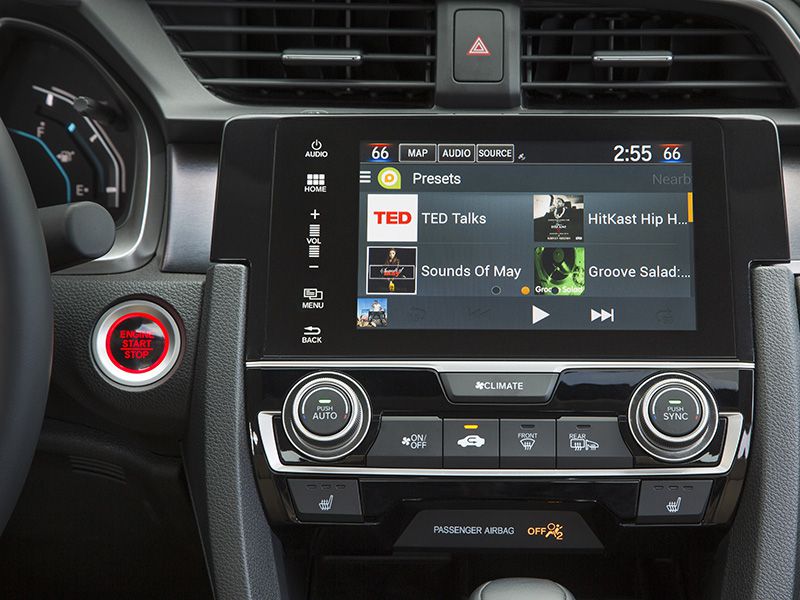
Photo by Honda
Exterior Design
The Sentra’s 2016 model year exterior facelift refreshed the front end with a sculpted look that incorporates a new hood, front fascia, grille, bumper, and lights for a more Altima-like appearance. The top-of-the-line NISMO model (new for 2017) sports a unique body kit and alloy wheels, along with a lowered suspension for a more aggressive appearance. The Civic’s complete redesign in 2016 marks a dramatic change from the past, from nose to tail. The steeply sloped rear deck has a fastback-like look and the front fascia features a sweeping grille and tightly integrated headlamps. The bold C-shaped tail lamps wrap around from the rear quarters to the trunk lid.
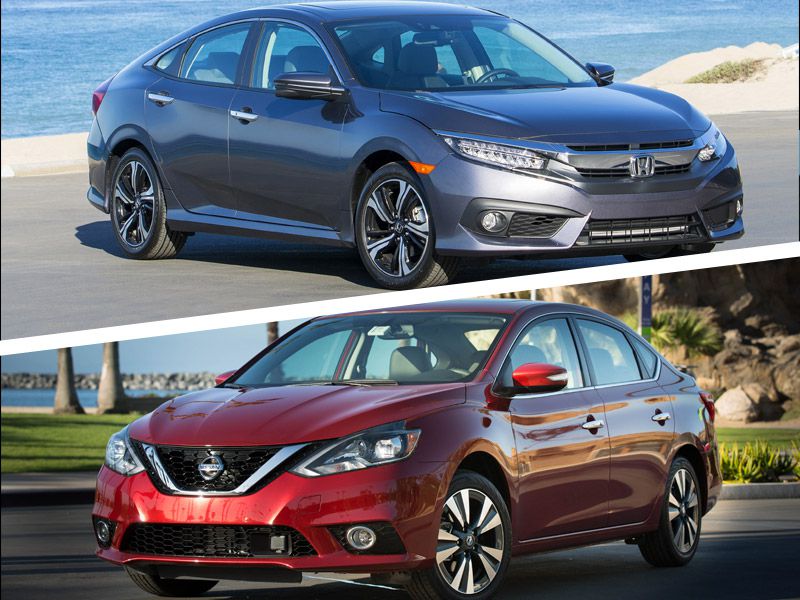
Interior Design
Both the Civic and Sentra offer stylish interiors, with large touch screen infotainment systems, crisp dashboards, and handsome steering wheels with a full complement of integrated controls. You’ll be tempted to step up to the Civic EX-L and Touring models for their decidedly upscale leather interiors, with 8-way power driver's seat and three-level heating in the front buckets (the Touring features heating in the rear outboard seats, as well). On the Nissan side, 6-way power seats with 2-way power lumbar and leather upholstery are optional in the Sentra SR and standard in the Sentra SL. Heated front seats are optional in the Sentra SV and standard in the SR and SL. The Sentra NISMO features a unique black and red synthetic suede upholstery.

Photo by Honda
Interior and Cargo Capacity
The 2017 Honda Civic and Nissan Sentra are closely matched when it comes to interior space and cargo capacity. The Civic sedan’s rear seat provides 36.8 inches of headroom (with a moonroof), 37.4 inches of leg room, and 55 inches of shoulder room, while the Sentra’s rear seat provides 36.7 inches of headroom (without a moonroof), 37.4 inches of leg room, and 53.9 inches of shoulder room. The 2017 Civic sedan provides 15.1 cubic feet of cargo capacity in all models, with the exception of the Civic Touring, which allows for 14.7 cubic feet. The 2017 Nissan Sentra matches the Civic sedan’s trunk space, with 15.1 cubic feet of cargo capacity, with a 60/40-split fold-down rear seat for additional capacity.
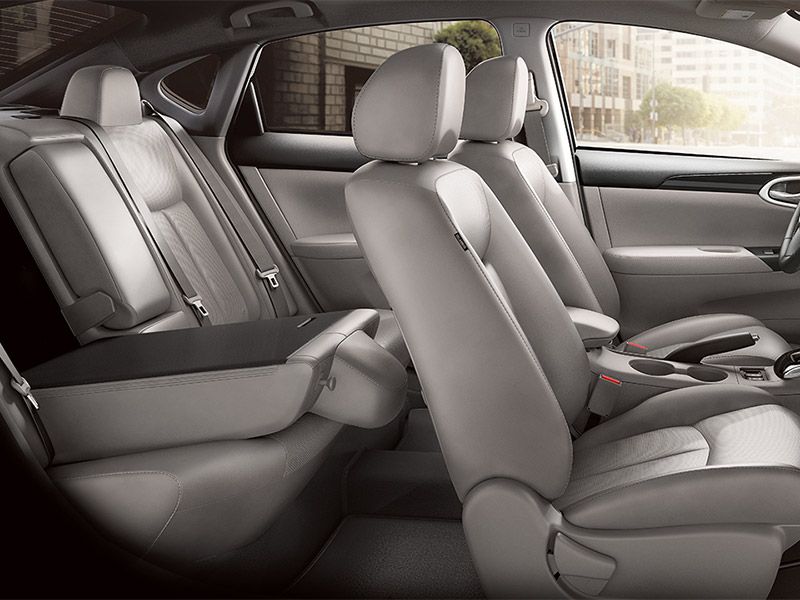
Photo by Nissan
Safety Ratings and Technology
The Insurance Institute for Highway Safety (IIHS) rates both the 2017 Honda Civic and Nissan Sentra sedans as Top Safety Picks when equipped with optional front crash prevention technology. The National Highway Transportation Safety Administration (NHTSA) gives the Civic five stars across the board. NHTSA rates the 2017 Nissan Sentra four stars overall, with five stars for side crash, along wth four stars for frontal crash and rollover. A rearview camera is standard in all Sentras, with the exception of the base S model. The Honda Sensing safety suite includes active lane keep assist, adaptive cruise control, collision mitigation braking, and road departure mitigation.
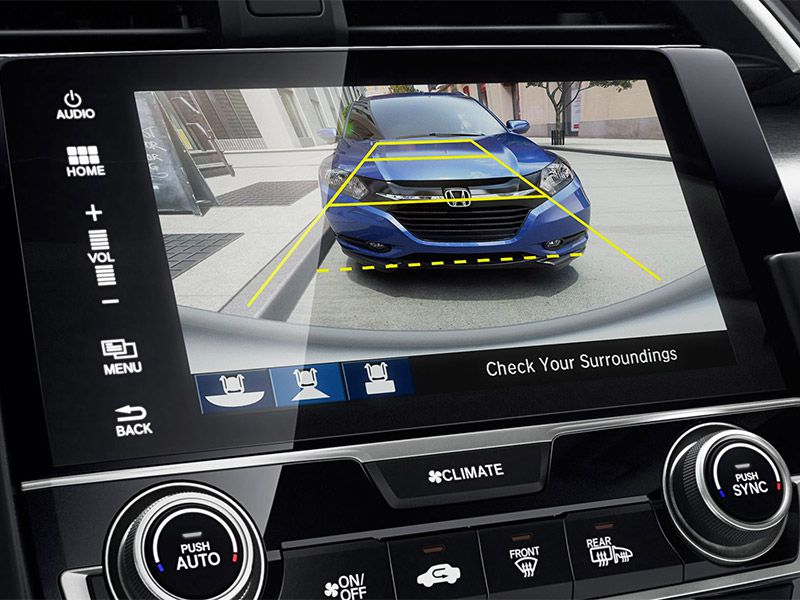
Photo by Honda
Performance
The Civic’s new platform delivers a far more refined ride than the Sentra. The Sentra’s older platform feels looser. Upgrading to the NISMO trim level should tighten things up considerably, but the ticket price might not reflect the total package. If you’re actively in the market, you need to drive the Civic and Sentra on the same day. Car and Driver coaxed a 9.5-second 0-60 time from the naturally aspirated Sentra and estimates the Sentra Turbo at 6.8-7.3 seconds. The turbocharged Civic squeaked past the Sentra Turbo, delivering an estimated 6.2-6.9 seconds.
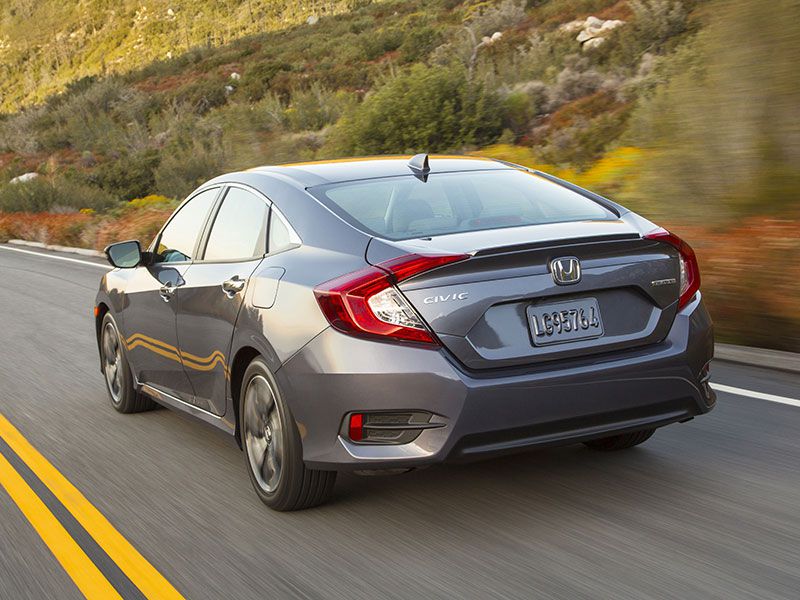
Photo by Honda
Which is Best?
A lot has changed over the years. The Civic and Sentra started as subcompacts: the Civic launching way back in 1972, the Sentra following a decade later, in 1982. While the current versions have sufficient interior room to be considered as midsize cars, they go head-to-head in the compact class. Choosing between the 2017 Honda Civic and Nissan Sentra sedans can be a tough call. Both cars are easy to live with and offer a choice of naturally aspirated or turbocharged engines. While the Civic is more sprightly, the Sentra offers a lower starting price and handsome styling. But the Civic delivers more refined handling, better fuel economy, and support for Apple CarPlay and Android Auto. The best way to decide which is best is to test drive the Civic and Sentra back-to-back to determine which car fills your needs and requirements. One size does not fit all.
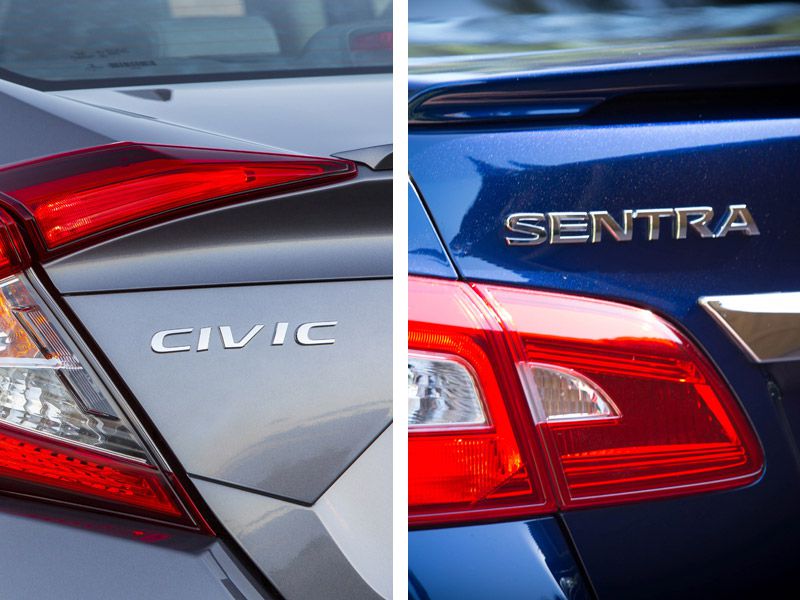
Photo by Honda and Nissan